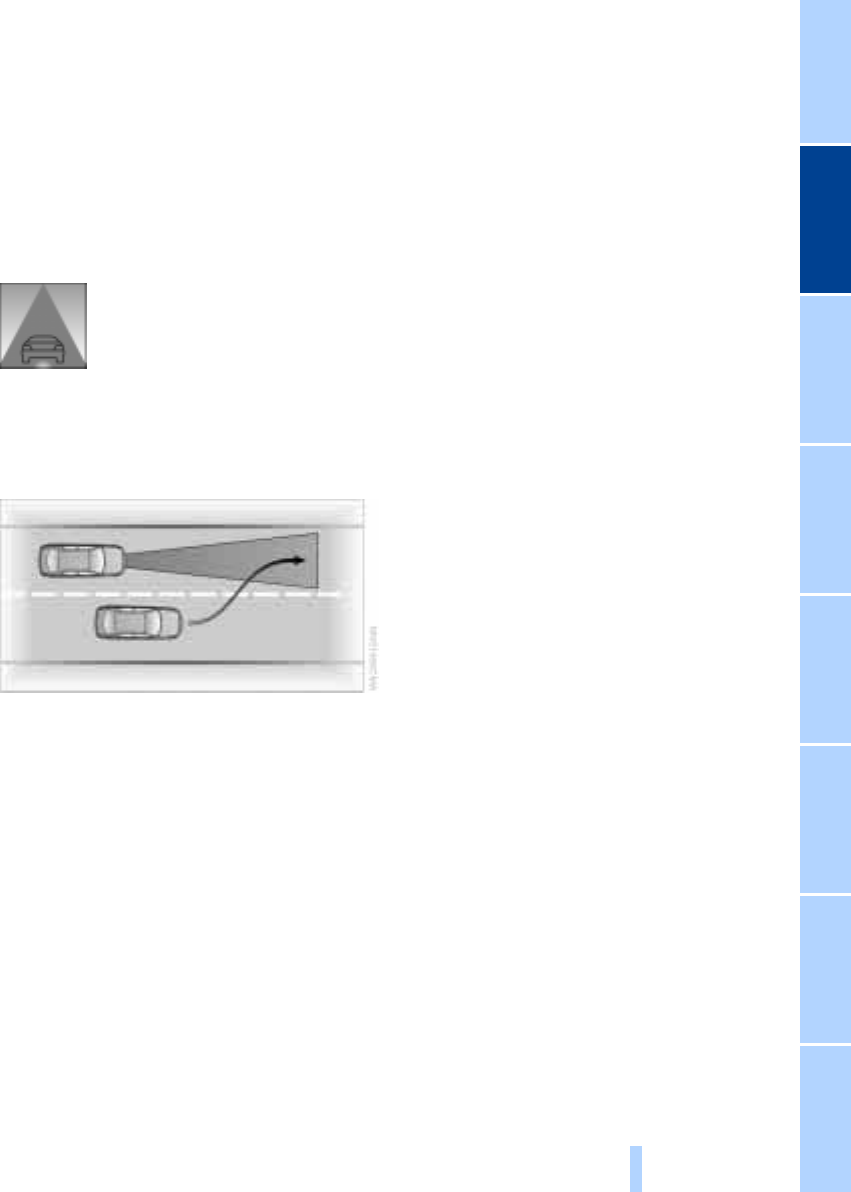
At a glanceControlsDriving tipsCommunications NavigationEntertainmentMobilityReference
81
braking system capacity and does not uti-
lize the full capacity of the vehicle braking
system. Therefore, the system cannot
decrease your speed for large differences
in speed between your vehicle and the
vehicle ahead. Examples: during emer-
gency braking, when you approach a
vehicle traveling at a much lower speed
than your own speed such as approaching
a toll booth or when a much slower vehicle
cuts in front of you at close range.<
Whenever active cruise control
recognizes a situation that
requires driver braking because
the system capacity has been
reached or has been exceeded,
the system alerts the driver by flashing this
symbol in the instrument cluster and
sounding a chime.
Swerving vehicles
When a vehicle moves from an adjacent
lane into your lane, active cruise control will
not recognize this vehicle until it is fully in
your lane ahead of your vehicle.
Malfunctions
The build-up of foreign material – e.g.,
snow, ice, dirt, road debris, etc. – can lead
to reduced detection performance of active
cruise control. You should check the
sensor under the front bumper and clean it
as necessary prior to driving your vehicle. If
the sensor becomes covered by foreign
material or has a malfunction, it is possible
that the sensor will no longer be able to
detect vehicles in front of you. After the
system recognizes that the sensor is no
longer functional, a message is displayed
in the Check Control and an acoustic signal
is emitted, refer to page 85. Also observe
the additional information provided in the
Control Center.
Online Edition for Part No. 01 41 0 157 197 - © 11/02 BMW AG


















